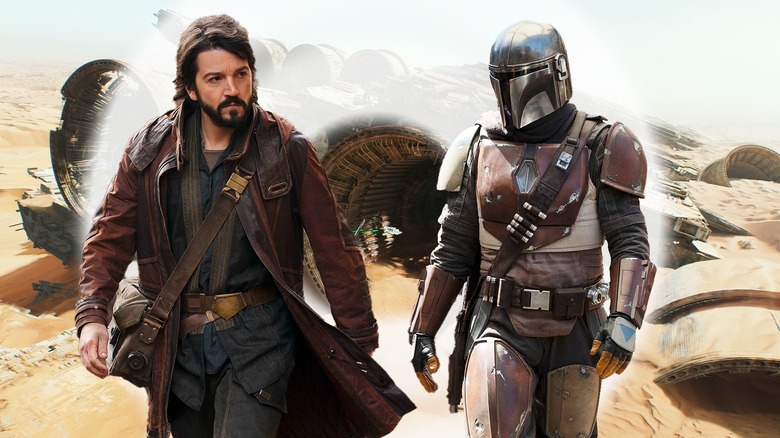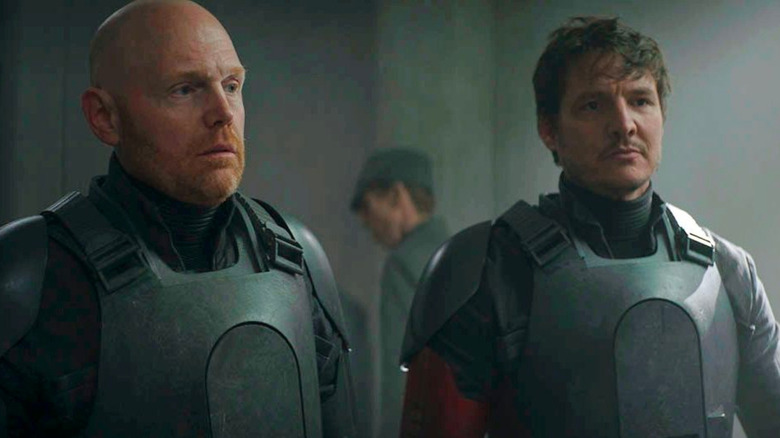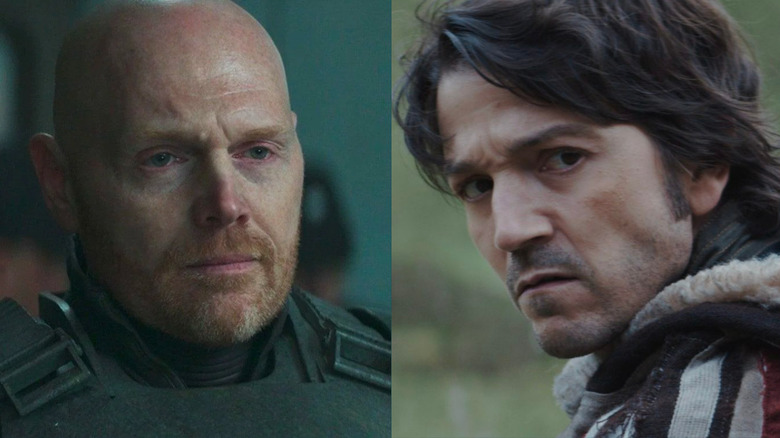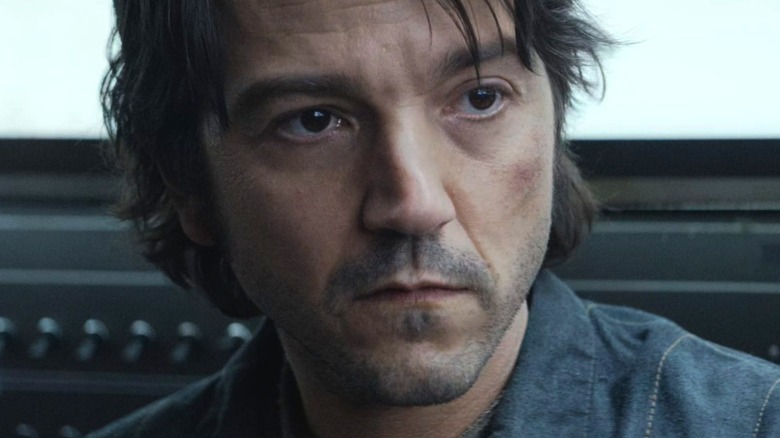The Mandalorian And Andor Succeed For The Same Reason (& This Lesson Could Save Star Wars From Itself)
When Disney made their first push for the "Star Wars" galaxy to take over the small screen, their poster boy was — and remains — the beskar-plated babysitter Din Djarin, star of "The Mandalorian." Brought to life by everybody's favorite apocalyptic found father, Pedro Pascal, Djarin is the biggest new Star Wars character of the new millennium not named Grogu ... despite the fact that, well, as the show's title makes clear, he's not the sort of space wizard protagonist that fans are used to.
Strangely enough, the most beloved Star Wars properties of this decade seem to succeed because of less Jedi magic. During Mando's time away from our televised space, the standard of Star Wars was elevated by the gripping first season of "Andor," a series that overcame a lack of buzz sheerly on the strength of its storytelling and critical acclaim. Viewing figures aside, "Andor" boasts — without a doubt – the best writing to have ever reached the "Star Wars" franchise.
Now, we know what some of you might be thinking: "The Mandalorian" and "Andor" are two very different space beasts, and there might be some truth to it. The former is undoubtedly bound closer to the Skywalker Saga than it pretends to be, particularly compared to "Andor." However, the DNA shared between the two shows is made evident when we look back on the best scene in all of "The Mandalorian," which proves that both shows have elevated the "Star Wars" franchise by putting the aforementioned space wizards aside to instead focus hard on political allegories, class inequality, and unbroken cycles of trauma.
Migs Mayfeld's shining moment in The Mandalorian's Season 2 had that Andor edge
You can show us a de-aged, dead-eyed Luke Skywalker as often as you like. The truth is, even if you take away the Marvel-ous world-building of "The Mandalorian," the single best scene in the series occurs when it moves past its titular hero to focus on a side-character who has been through some tough times. That character, of course, is former Empire sharpshooter and gun-for-hire, Migs Mayfeld (Bill Burr). And in Season 2, Mayfield sits down with a former commander to trigger a scene that — brilliantly — puts a Quentin Tarantino spin on George Lucas' galaxy.
Let's back up and explain how this all goes down, however. In "Chapter 15: The Believer," our trigger man crosses paths with a former general, Valin Hess (Richard Colin Brake) while on a mission with Mando. Together, they both reminisce about Operation: Cinder — and specifically the attack on the planet Burinn Konn, that saw lives lost, all in the name of the Empire. This all leads Migs to gun the Colonel down.
It's a tense moment that doesn't spare a second for Jedis, Sith, or ancient orders that "Star Wars" is known for. It's just two people on opposing sides, both of whom received first-hand experience of the war raging across the galaxy. Brief as it is, it's this boots-on-the-ground narrative that walked so that Tony Gilroy's "Andor" could fly.
The Mandalorian and Andor both pull back the magic curtain
The great thing about Mayfeld is that man playing him isn't aggressively trying to craft an oh-so-deep character. Mayfeld just is. Burr's already dry demeanor adds an extra layer of realism to his character, letting us see what makes him tick simply by virtue of his no-nonsense style. He's a veteran from the losing side, that's kept going only because he's good with a gun. Call Han Solo cranky or "Last Jedi"-style Luke Skywalker depressed all you like, but neither of them hold a candle in these areas to the dour Mayfeld, who isn't doing anything for a higher purpose, and simply is living for the sake of living.
It's this brutal honesty, of a war-time veteran still scarred by war and unable to truly recover, that makes his standoff in the aforementioned scene so compelling. His directness regarding Operation: Cinder lacks the elegancy of a Jedi Knight hearing millions of voices being suddenly silenced like in "A New Hope." Instead, it's a lowly former trooper speaking up for the fallen, because he's one that survived.
The scene wouldn't feel out of place in "Battlestar Galactica," frankly. Even more integrally, though, you could honestly plop the talk between Migs and Hess right into the finale of Season 1 of "Andor," and it'd fit like a glove. Sure, the locations might differ, and names will have changed, but one person arguing if the death of those "poor mud scuffers" was "all for the good of the Empire" is in line with the same issues that would be revisited two years later. This clear bit of trauma from Migs once again provides a realistic and relatable perspective that would not only be replicated in "Andor" but would, in a way, give a face to the people impacted by the Empire the most.
Stark realism is the right direction for Star Wars' future
This one scene cuts deeply into the broader themes of "The Mandalorian" and its war-torn landscape, but it also paved the way for "Andor" to really break through and rewrite the Star Wars universe as a whole. Both shows, in their respective ways, make clear-cut statements on social class and totalitarian regimes that ring out louder than previous "Star Wars" chapters ever have. This was also something that Rian Johnson, for all his troubles, tried to highlight in his divisive sequel "The Last Jedi" — that revolution is not about legacies or family lineage, but from the rising of the working class against their oppressors.
Both "The Mandalorian" and "Andor" have proven there's more to the franchise than X-wings and space wizards. This revelation could be what pushes "Star Wars" to new heights in the future. And while "The Mandalorian" doesn't tend to get as deep and dark as the first season of "Andor" did, the scene with Migs makes it clear that it can go there, and perhaps it should. Because while sure, it's fun to see homages and cameos to the original "Star Wars" trilogy, this is a franchise that needs to remake itself for new audiences, and that's going to require something more complex than platitudes like "May the force be with you."



